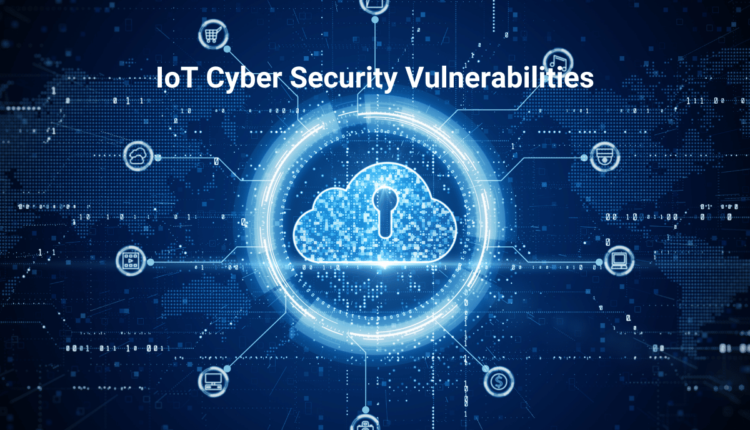Written by Abuh Ibrahim Sani
The rapid development of urbanization has brought the innovation of smart cities where digital technology and data-driven systems are been used to improve the services of urban systems to the people. Virtual in our modern home today, IoT devices and appliances are taking centre stage in making lives convenient and easy for citizens. The innovation of IoT systems in urban development has connected millions of devices, sensors and gadgets. However, there is serious concern as regards the security of IoT devices and also the cybersecurity of smart cities.
The Role of the Internet of Things in Smart Cities
The foundation of any smart city lies in its IoT infrastructure. These devices are linked in every angle of the city management, from public transportation and traffic control systems to waste management, medical devices, energy and water supply. They constantly collect, transmit and analyse data, allowing cities to run more efficiently. The connectivity of this device brings a potential entry point for cyber-attacks, the more connected the devices, the greater the increase in attack surface and breaches. In the area of smart cities, the security of these devices becomes even more worrisome because of the many critical infrastructures they control. A single breach could affect the spread and cause chaos.
Inadequate Security of IoT Devices
Securing smart cities is difficult because a large number of IoT devices do not have strong security features. Many IoT devices, especially those mass-produced and sold cheaply, lack built-in security protocols in their hardware. Hackers can take advantage of fundamental weaknesses such as simple passwords, outdated firmware, and absence of encryption. For example, a lot of IoT devices use default or hardcoded passwords that are easily obtainable, making the devices vulnerable to hackers who take advantage of these vulnerabilities to take control. Compromised IoT devices in smart cities can serve as gateways for launching major attacks that could affect power grids, traffic control systems, and emergency services.
The Complexity of IoT Ecosystems
Smart cities operate via a network of interconnected devices that communicate with different systems. Handling such a large and varied ecosystem presents a cybersecurity challenge in its own right. Various devices can use various protocols, which are often from different manufacturers, resulting in fragmented security measures. Coordinating and standardizing security across different platforms and devices is a challenge in the growing IoT landscape. The high quantity of devices in a smart city presents an additional challenge. Keeping track of and protecting numerous, potentially millions, of interconnected devices simultaneously poses a substantial challenge for any urban area. The difficulty further increases with numerous devices placed in public or distant areas, which makes ensuring physical security and timely updates a challenge.
The Risk of Large-Scale Attacks
Smart cities are at risk of facing major cyberattacks due to vulnerabilities in IoT technology, which can have serious impacts on both residents and city functions. Distributed Denial of Service (DDoS) attacks have the potential to incapacitate critical services such as traffic control, healthcare, and energy distribution by flooding IoT systems with harmful traffic. Moreover, in smart cities, IoT devices gather extensive data, which includes confidential information such as traffic flow, energy consumption, and even personal data of the residents. If hackers manage to access these systems, they could potentially steal or alter the data, leading to breaches of privacy, fraud, or even blackmail. During the Mirai botnet attack in 2016, compromised IoT devices were used to carry out a large-scale DDoS attack that disrupted key internet services in the United States and Europe. Comparable attack on intelligent city infrastructure may result in disorder, affecting millions of individuals simultaneously.
Lack of Industry-Wide Security Standards
An important challenge in dealing with IoT vulnerabilities in smart cities is the lack of uniform security standards across the industry for IoT devices. Despite the actions taken by different organizations and governments to create rules and structures, the rate of adoption is not keeping up with the fast spread of IoT devices. Without established guidelines, manufacturers might place more importance on ease of use and affordability than on ensuring security. This leads to a broad range of security levels being used on different devices, causing challenges for cities looking to establish common security standards. The absence of uniform security protocols in smart cities can impede collective initiatives to reduce risks as they progress.
Challenges in Patching and Updating Devices
Updating or patching IoT devices is often challenging due to their reputation for being hard to manage. Many IoT devices run on old software that isn’t frequently updated or maintained by manufacturers, unlike computers and smartphones that receive regular updates and security patches. In certain instances, the manufacturers might have ceased operations, resulting in no possibility for further updates. The absence of continuous assistance leaves devices vulnerable to cyber threats in the long run.
Deploying updates to a city’s extensive network of IoT devices can be complex and expensive, even when the updates are readily available. Several devices are situated in areas that are difficult to access, and updating them could lead to interruptions in critical services. The vulnerabilities that cybercriminals can exploit are a result of the delay in securing devices.
Conclusion
The emergence of IoT-powered smart cities provides amazing chances to enhance city living. Nevertheless, the security challenges posed by vulnerabilities in IoT devices must be dealt with. The cybersecurity of smart cities remains a continuous concern due to insufficient security measures, the complicated nature of IoT ecosystems, the absence of standardized security practices, and challenges in device maintenance. Cities, manufacturers, and regulators to collaborate to develop stronger security frameworks that tackle the specific obstacles of IoT. Only by doing so we can guarantee that smart cities stay secure and keep providing benefits to residents without risking safety or privacy.


